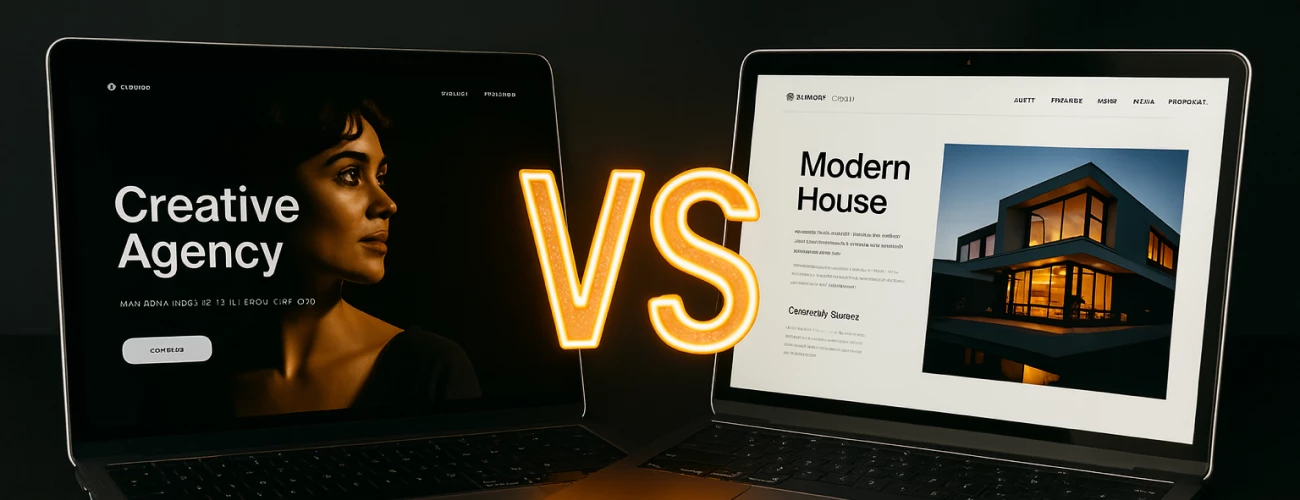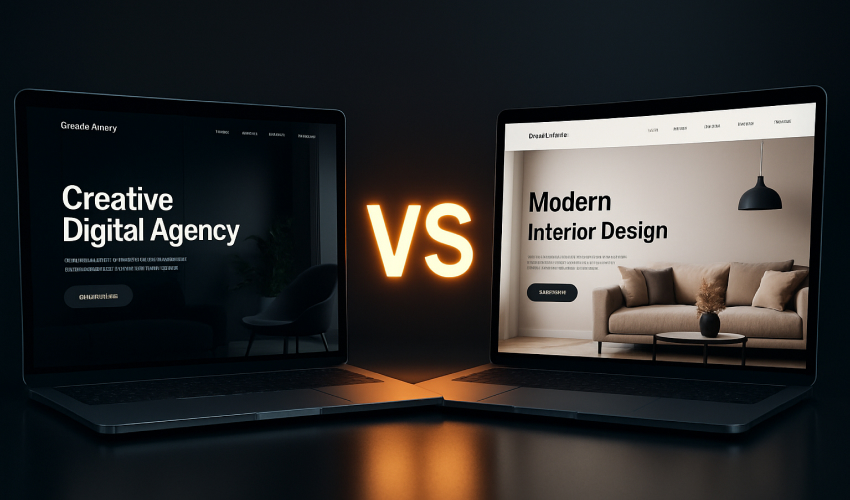Landing page vs corporate website: where businesses lose customers

When a company decides to make itself known online, the question immediately arises: which is more effective — a concise landing page or a full-fledged corporate website? A landing page is created quickly but cannot always convince a client of the brand’s reliability. A corporate website looks solid and strengthens trust, but if poorly thought out it loses clients. Which to choose — read on.
Main goals of a landing page and a corporate website — comparison
The first thing to know is that each of these formats has its own specifics and suits different business tasks:
- the goal of a landing page is to sell, collect a lead or register a user; the content is minimalist, focused on the USP (unique selling proposition) and a call to action, and success is measured by conversion and cost per lead;
- the goal of a corporate website is to form the brand image, demonstrate its professionalism and reliability; it contains sections about the company, products, case studies, a blog and vacancies; success is measured by various metrics, including time spent on site, returning visits, organic traffic and inquiries to the sales department.
Which site a business should choose depends on its objectives. A landing works as a quick magnet for customers — it attracts attention to a specific promotion or product and pushes users to act. A corporate website is aimed at long-term interaction with clients.
Scenarios where a landing is better — quick campaigns and hypothesis tests
Creating a Landing Page is an ideal option for short advertising cycles, promotions and testing marketing hypotheses. Main use cases:
- quick campaign launch: a landing allows you to rapidly test a product or service in Ukraine because it does not require long development;
- promo landing: it is especially relevant when the company runs a sale or a time-limited promotion;
- A/B testing a landing: single-page sites are perfect for experiments; you can create several versions at once with different headlines, offers or designs and later evaluate the effectiveness of each;
- MVP landing: a minimal page version is a way to validate a product idea before launch; if people leave requests or click the button, demand exists and the project is worth developing.
Using landings in these scenarios helps a business quickly adapt to the market and make decisions based on real data rather than hypotheses.

Scenarios where a corporate website is needed — trust, complex sales, partner interactions
The advantage of a multi-page site is that it is not just a “business card” but a full tool to reduce risk and confirm a company’s reliability. A corporate website is necessary in these cases:
- trust for high-stakes decisions — when a purchase involves large sums or risks, clients want to be sure the company is reliable; they review case studies, testimonials, certificates and partner lists, which strengthens trust;
- complex and long B2B sales — in such cases, decisions are usually made by several people, from analysts to executives; they need to study the company, products and cooperation terms, and a multi-page site simplifies this process;
- interactions with investors and partners — corporate sites publish news, articles, reports and contacts — everything that helps transparently present activities and build trust.
By developing a corporate site for partners under these scenarios, companies not only reduce customer acquisition costs and simplify the sales team’s work but also strengthen their market position by demonstrating reliability and professionalism.
Where clients are lost — typical weaknesses of landings and corporate sites
Clients are not only lost to competitors — often they get lost on the site itself. Reasons include an unclear offer, slow loading, confusing structure or lack of trust signals. In some cases, the reasons for leaving a landing and leaving a corporate site differ.
Why clients are lost on a landing:
- mismatch between ad and page — the user arrives via an ad and does not see what was promised; in that case they leave and do not return;
- weak call to action — if the button or form does not show a clear benefit for the user, there will be no conversion;
- too many goals — a landing should solve one task: extra details distract and increase the chance of abandonment;
- lack of trust signals — insufficient credibility makes users hesitate and not leave contacts;
- inconvenient funnel — if the path from interest to action is not obvious, the visitor leaves the page without converting;
- poor lead qualification — sometimes requests come in but do not convert to deals because the landing attracts non-target users.
Typical mistakes of corporate sites that lead to client loss:
- confusing navigation — the visitor cannot quickly find the needed information;
- outdated or irrelevant data — create an impression of neglect and reduce trust;
- weak evidential base — in B2B deals clients look for case studies and technical documentation; their absence can lead to refusal to cooperate.
Fixing these mistakes will reduce visitor churn and increase conversion, turning random visits into real deals.
Recommendations: hybrid approaches and the right combination of landing and site
An effective online strategy is built on combining landings and the corporate site. Key principles of a hybrid approach include:
- multi-landing: create separate landings for each audience and ad campaign to increase conversion;
- integrating the landing into the site: single-page sites should be part of the overall architecture — connect their forms to CRM, run end-to-end analytics, and store all data in a single database;
- traffic routing: to increase conversions, direct visitors to the most relevant pages depending on their device or behavior;
- unified brand experience: appearance, tone of messages and visual elements should be consistent across landings and the site to build trust and brand recognition.
Applying these principles allows you to combine the speed and flexibility of landings with the reliability and depth of a corporate website. The business will be able to quickly test marketing hypotheses, attract traffic and strengthen customer trust, turning interest into real deals.
Your project
Call/write:


